Vector Autoregression Models
by Darren Zeng

1. definition
1.1. A VAR model is a systems regression model i.e. there is more than one dependent variable.
1.1.1. y1, y2, ....
1.2. The analysis could be extended to a VAR(g) model so there are g dependent variables and g equations
2. reasons to use VARs
2.1. There is NO need to SPECIFY which variable are endogenous or exogenous variables – all are ENDOGENOUS
2.2. VARs explain movements in variables using additional information from just their OWN LAGS and MA TERMS (as in AR or ARMA models)
2.3. There are NO CONTEMPORANEOUS TERMS on the right hand side (RHS) of the equations hence OLS CAN BE USED separately on each equation. The right hand side contain predetermined variables.
2.4. Given the LAGGED TERMS on the RHS VARs provide a CONVENIENT platform for FORECASTING.
2.5. FORECASTS are often BETTER than traditional structural models
2.6. Can help provide interesting information about the relationships we examine such as VARIABLE DECOMPOSITION (explained later)
2.6.1. They give the proportion of the movements in the dependent variables that are due to their ‘own’ shocks, versus shocks to the other variables.
2.6.1.1. This is done by determining how much of the s-step ahead forecast error variance for each variable is explained by innovations to each explanatory variable (s=1,2, ...)
3. PROBLEMS
3.1. VARs are atheoretical (such as ARMA specifications)
3.2. How do we decide the APPROPRIATE lag LENGTH?
3.2.1. Information criteria is a solution
3.3. TOO MANY PARAMETERS to estimate which is a major issue in small samples.
3.3.1. g equations for g variables (assume g=3)
3.3.2. We use k lags of each of the variables in each equation (assume k=3)
3.3.3. Numbers of parameters to estimate: g+kg2 (3+3x32 = 30 in our example)
3.4. INTERPRETATION of coefficients is not straightforward
3.5. Should VARs contain stationary variables (and hence most likely variables in their FIRST DIFFERENCES).
4. What Do the Causality and F-Tests Not Tell Us
4.1. (i) Whether changes in the value of a given variable have a positive or negative impact on other variables
4.2. (ii) When the effects are revealed and how long these impacts last
5. IMPULSE RESPONSES
5.1. Impulse responses trace out the responsiveness of the dependent variables in the VAR to shocks to each of the variables;
5.2. for each variable from each equation separately a unit shock is applied to the error and the effects upon the VAR system are traced.
5.3. A change in u1t will immediately change y1. It will change y2 and also y1 during the next period
5.4. A change in u1t will immediately change y1. It will change y2 and also y1 during the next period
6. Granger Causality Tests – Block Significance Tests
6.1. CROSS-FIRE--2*2=4
6.2. Each of the joint hypotheses can be tested within the F-test framework, since each set of restrictions contains only parameters drawn from one equation.
6.3. Granger causality tests seek to answer questions such as: “do changes in y cause changes in x”? If y causes x, lags of y should be significant as a block in the equation for x. If lags of x do not cause changes in y (not significant in the equation for y) there is a unidirectional causality from y to x.
6.4. Bi-directional causality or feedback
6.5. Strongly exogenous variables
6.6. ¡®Causality¡¯ in this context really means correlation, it does not mean movements of one variable cause movements of another.
7. When calculating impulse responses and variance decompositions, the ordering of the variables is important.
7.1. Main reason: we assumed that the VAR error terms were statistically independent of one another but this is generally not true. The error terms will typically be correlated to some degree.
7.2. The error terms (innovations) have a common component and the examination of the shocks separately has little meaning.
7.3. An examination of the correlation structure between the residuals series will guide the choice as to how important is to examine a variety of variable orderings
7.4. It has been argued that impulse responses and variance decompositions are both difficult to interpret accurately. Confidence bands should be constructed.



